Greenland 1947
Willi Dansgaard really made a name for himself in the research community in the late 1960s when he made a climate analysis of an ice core from Greenland, but his lifelong interest for the snow-clad country was already awakened many years earlier when he visited it for the first time. After graduating in 1947 he was offered a position at the Meteorological Institute and the opportunity to be stationed in Godhavn.
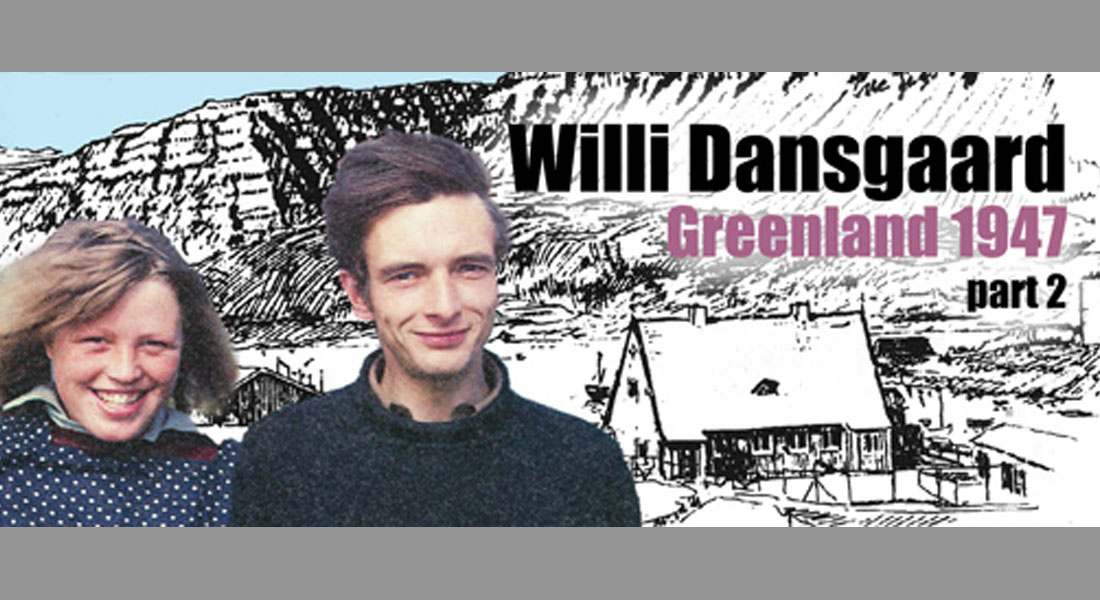
Bound for Godhavn
Just four months later, in September 1947, the now 25-year-old Willi and his 19-year-old wife are on their way to the Magnetic Observatory in the town of Godhavn in Disko Bay on Greenland’s west coast, where since the middle of the 1920s the Meteorological Institute had studied the magnetic turbulence that the Sun creates on the Earth’s surface. The journey is by ship and Inge provides vivid descriptions in her diary of how seasickness followed them on the journey.
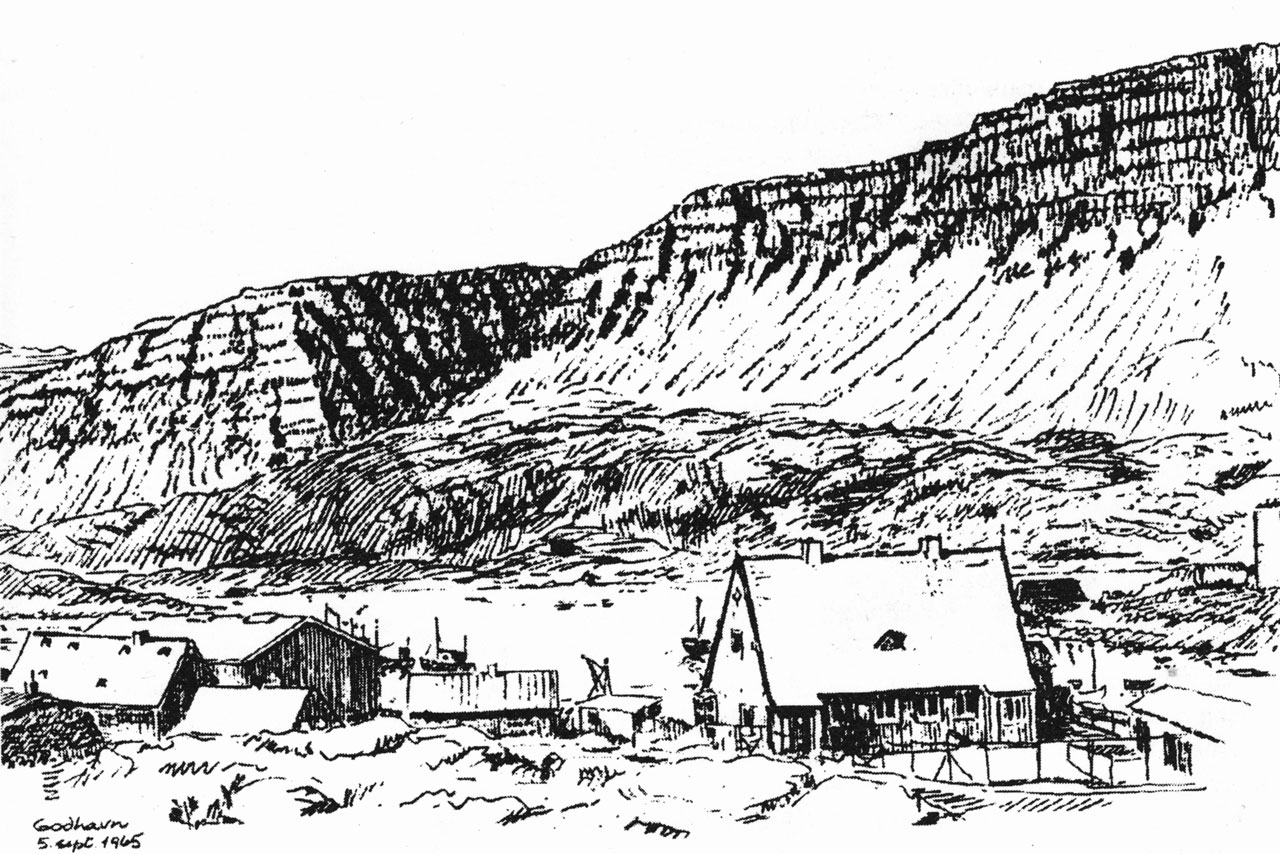
Godhavn, where observatory is located, is a not so small town in the Greenlandic context with 400 inhabitants, a church, a newspaper, a shop and a little hospital run by the nurse, as the nearest doctor is day’s sled journey away.
The shop can get anything your heart desires, “if you had remembered to send it up and if had not been unloaded in the wrong harbour and if had not been destroyed en route and if and if …” writes Dansgaard.
“For long periods we lived on chocolate”
When they finally arrive in Godhavn after 21 days, it turns out that not all of the materials for the house they are to live in have arrived. As a result, they have to temporarily move in with another Danish family in the unfamiliar town and until the supplies arrive and the house can be built.
Unfortunately, their new home burns down to the ground just two weeks after the house is finished and they have to move again and live off of the supplies that that are still left in the town’s shop – including rye, oats and chocolate. “For long periods we lived off of chocolate to such an extent that I could not bear to see the stuff for years afterwards,” says Dansgaard.
They did not get set up in their own house until the middle of May 1948.
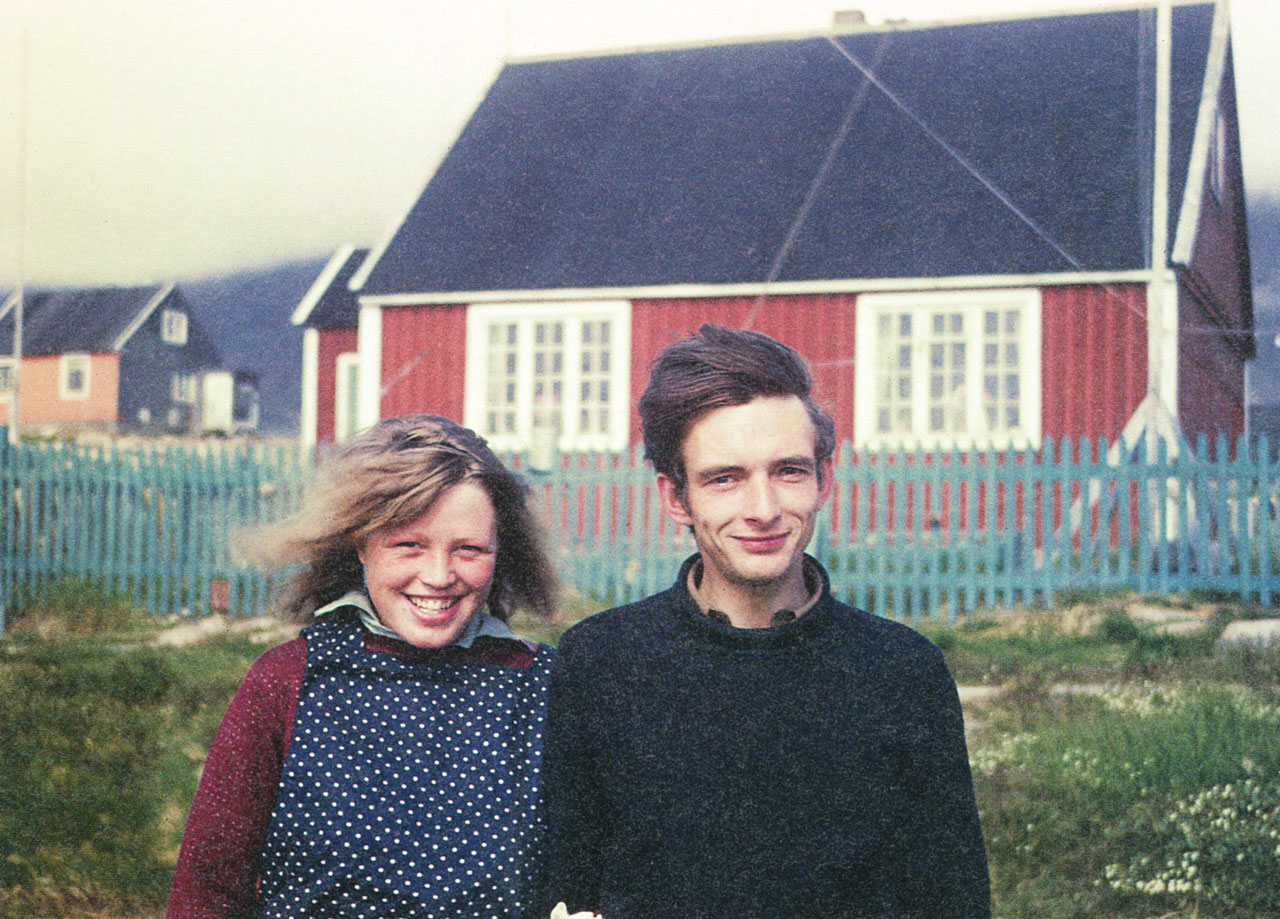
They spent their evenings reading. ”Each evening Willi read aloud from a good book while I sewed the many things I was working on. We borrowed the books from the library or from the bailiff and it was very cosy. We grew together during that time,” writes Inge in her diary. The days were for work and their new hobby, dog sledding.
Magnetic turbulence
At the observatory, Dansgaard is busy collecting data on the magnetic fields or the “magnetic turbulence” that the Sun creates, especially in polar regions.
”If a geologist needs to use magnetic measurements to study the surrounding rocks, he has to “calibrate” his reading for random magnetic turbulence. He can do this using the Godhavn records,” he explains. But of course this requires that you can trust that the turbulence is the same as in Godhavn ...
The work at the observatory goes as planned until one day in May 1948 when the family’s ”kivfak” or servant girl, Salomine, knocks over and breaks an instrument, thus sending the family on a small trip to Qudligssat to get it repaired. On June 7 they are back in Godhavn, where they spend the summer before their scheduled return.
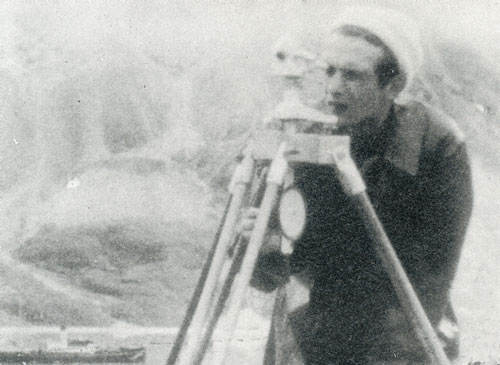
When everything is packed away in Godhavn, Willi and Inge board the M/S Disko to make a little tour of Disko Bay, where Dansgaard will measure magnetic turbulence in different places.
During his stay, Willi Dansgaard often discusses with his colleagues whether the measurements from Godhavn can be said to be representative or whether they should be understood as a local phenomenon and as the time for the family’s return home approaches, he offers to investigate further.
The small expedition is a success and it turns out that the measurements from Godhavn are not actually representative for anymore than a very limited geographic area.
Dansgaard looks forward to presenting his first real geophysical research at the institute when he comes home to Copenhagen, but to his great disappointment, he is met with a total lack of interest from the head of the institute.
”from the moment after my return in 1948 I realised that my days at the Meteorological Institute were numbered and I began to visit the Biophysical Laboratory again, where I had felt so at home,” he explains.
The first car in Godhavn
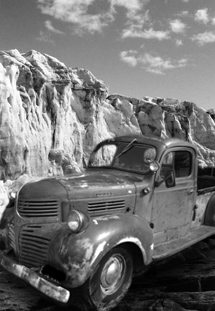
”In the evening, the first car arrived in the colony with the “Nordlyset”. It was to be used to transport gravel and stone for the radio station. The inhabitants of Godhavn had never seen a car before – neither the oldest nor the youngest. They were all out – all of Godhavn stood on a rock and craned their necks and gazed.
The truck was hoisted ashore. Then it stood there. Brum-brumme-rummm-mm kr-r-r and then it roared off as if it had hundreds of dogs harnessed to it – 100 wild dogs.
And Godhavn cheered. Young and old, large and small – they galloped like the devil after the wonder that sped along the bad road. They were not afraid, tried to jump on the side, as they would onto a moving sled, remained hanging on the fenders and the spare tire.
Inside the wheelhouse sat the architect Grøndal-Olsen putting the pedal to the metal in the beast to show the Greenlanders civilisation in all its power and might. When the car stopped at the assistant residence and all had been convinced that the vehicle was bigger and stronger than the best dog sled, a catastrophe happened: The gas seeped out of the rings. The beast sank quietly back on its heels and lay down to rest in the middle of the road. That would never happen with the dogs. Thus came “civilisation” to Godhavn."
- From Willi Dansgaard's autobiography, Grønland i Istid og Nutid (Greenland in the Ice Age and the Present), 2000.